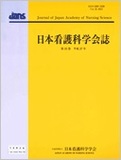Japanese
English
- 販売していません
- Abstract 文献概要
- 参考文献 Reference
要旨
目的:我が国における,キュアとケアの融合に関する看護実践の内的構造を明らかにすること.
方法:看護師として役割を拡大しキュアを含む実践を行っている専門看護師を対象に半構成面接を実施し,得られたデータを修正版グラウンデッドセオリー・アプローチにて分析した.
結果:12名の専門看護師に対する面接から10のカテゴリーが得られ,それらの持つ性質ごとに分類した結果,キュアとケアの融合に動き出すきっかけとなる「動因」,キュアとケアを融合した看護実践を支えていく「支軸」,キュアとケアの融合を進める「中核要素」,キュアとケアを融合した看護実践により起こる「効果」の4つの側面から成るケアとキュアの融合の内的構造が明らかとなった.
結論:看護師がキュアの領域に役割を拡大したことにより,キュアを看護の視点で見つめケアと合わさることで,従来とは異なる治療や療養生活の形を生み出していた.以上の結果より,ケアとキュアの融合の内的構造が示された.
Purpose: This study aimed to clarify the integration of care and cure and the internal structure of nursing practice in our country.
Methods: The sample comprised 12 certified nursing specialists with expanded nursing roles. Data were collected through semi-structured interviews and analyzed using the modified grounded theory approach, a qualitative synthesis method.
Results: Ten categories were extracted, and were characterized by the following 4 features of the integration of care and cure. “Drive” is the trigger to start integrating care and cure. “Prop” refers to support for nursing practice that integrates care and cure. “Core elements” are what push care and cure to integrate. “Effect” is the result of the nursing practice that integrates care and cure.
Conclusion: As nurses expand their roles, they can review cure from the nursing perspective and integrate it with care, consequently establishing a new medical treatment. The above results revealed the internal structure of integrating care and cure.
Copyright © 2015, Japan Academy of Nursing Science. All rights reserved.


